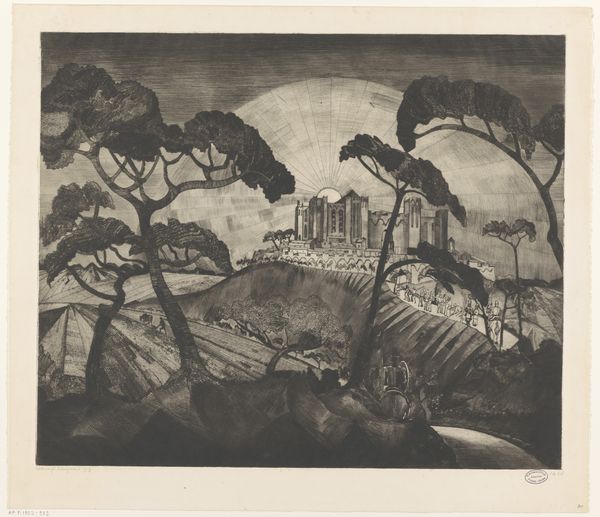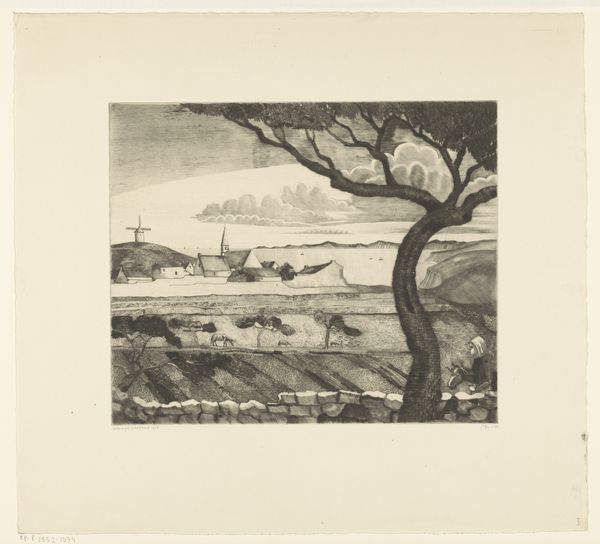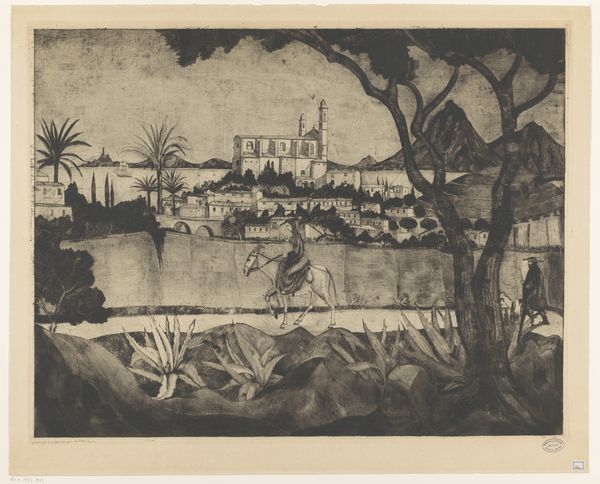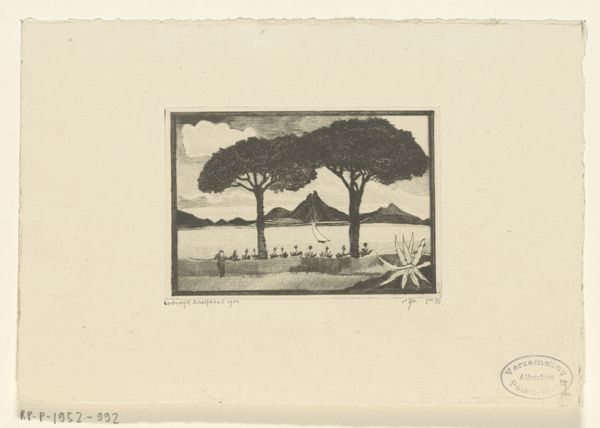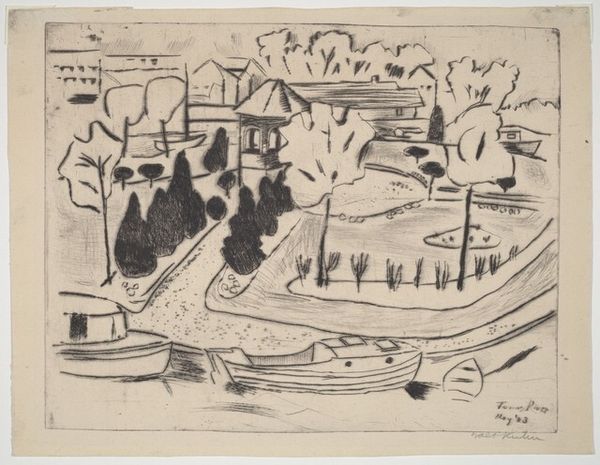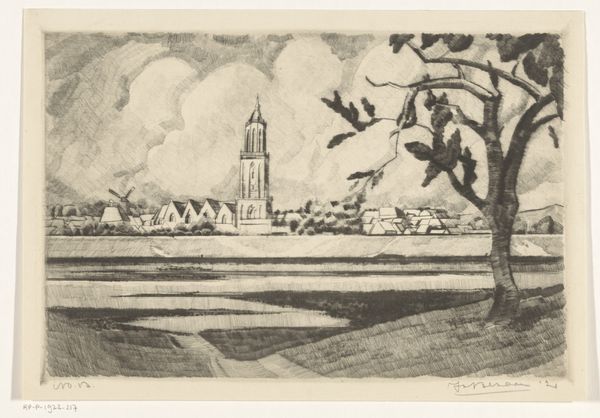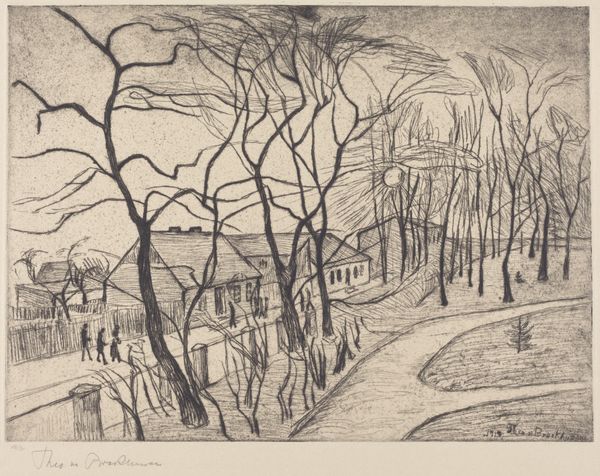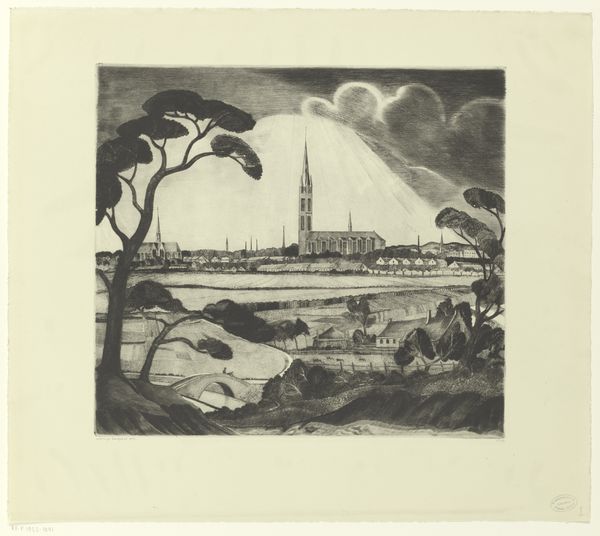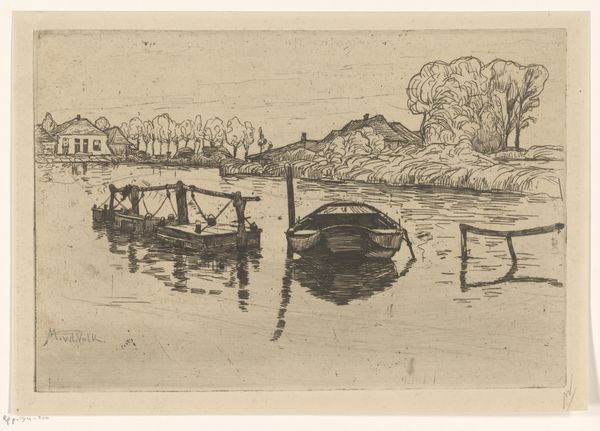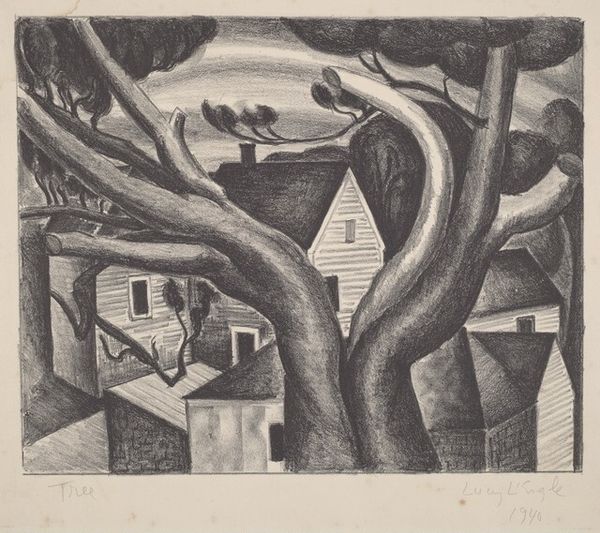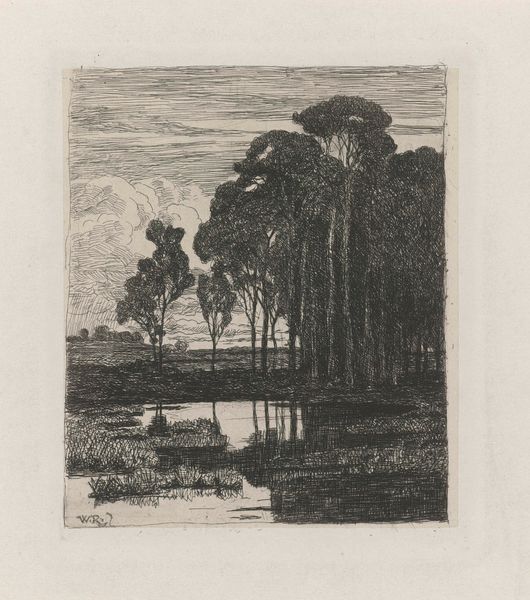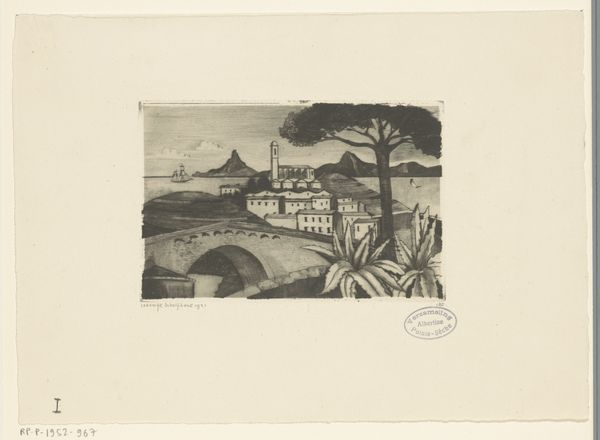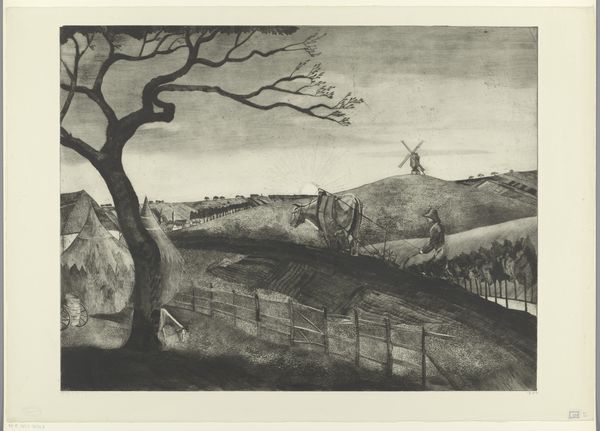
#
light pencil work
#
pencil sketch
#
old engraving style
#
cartoon sketch
#
personal sketchbook
#
ink drawing experimentation
#
pen-ink sketch
#
sketchbook drawing
#
cartoon carciture
#
pencil art
Dimensions: height 490 mm, width 642 mm
Copyright: Rijks Museum: Open Domain
Editor: So, this is Lodewijk Schelfhout’s “Haven van Bastia op Corsica,” made in 1924. It’s a print, giving it a somewhat stark, graphic quality. What strikes me most is how the scene feels both idyllic and strangely isolating. What do you see in it? Curator: The starkness you observe speaks to a critical tension: the romanticized view of Corsica versus the lived realities of its inhabitants. Schelfhout, as a Dutch artist, likely approached this landscape with a colonial gaze, seeking an ‘untouched’ paradise. Notice the figure on the donkey – does she seem integrated into the landscape or almost imposed upon it? Editor: I see what you mean. She's definitely separate. Like she’s passing through rather than belonging. The way she is dressed makes me think about how she relates to the environment. Curator: Precisely. Her dark clothing creates a silhouette that sets her apart, hinting at potential socio-economic disparities. Consider the time this piece was created – the 1920s were a period of burgeoning tourism. How do you think the print reflects or perhaps critiques this influx of outsiders impacting the local culture? Editor: It’s interesting…the woman on the donkey and the fishermen might be experiencing displacement because of tourism. Curator: Yes, displacement of cultural practices. The artist uses visual cues that are a mix of both observational and social commentary. What seems at first like a simple landscape harbors deeper questions about cultural preservation and the ethics of representation, don’t you think? Editor: I agree. I didn't catch it before, but the visual is infused with questions regarding tourism, colonialist views, and socioeconomic considerations. It has been great discussing these socio-political perspectives and reflecting upon identity. Curator: Absolutely, and by discussing those factors, we can perceive the painting through an intersectional lens.
Comments
No comments
Be the first to comment and join the conversation on the ultimate creative platform.

